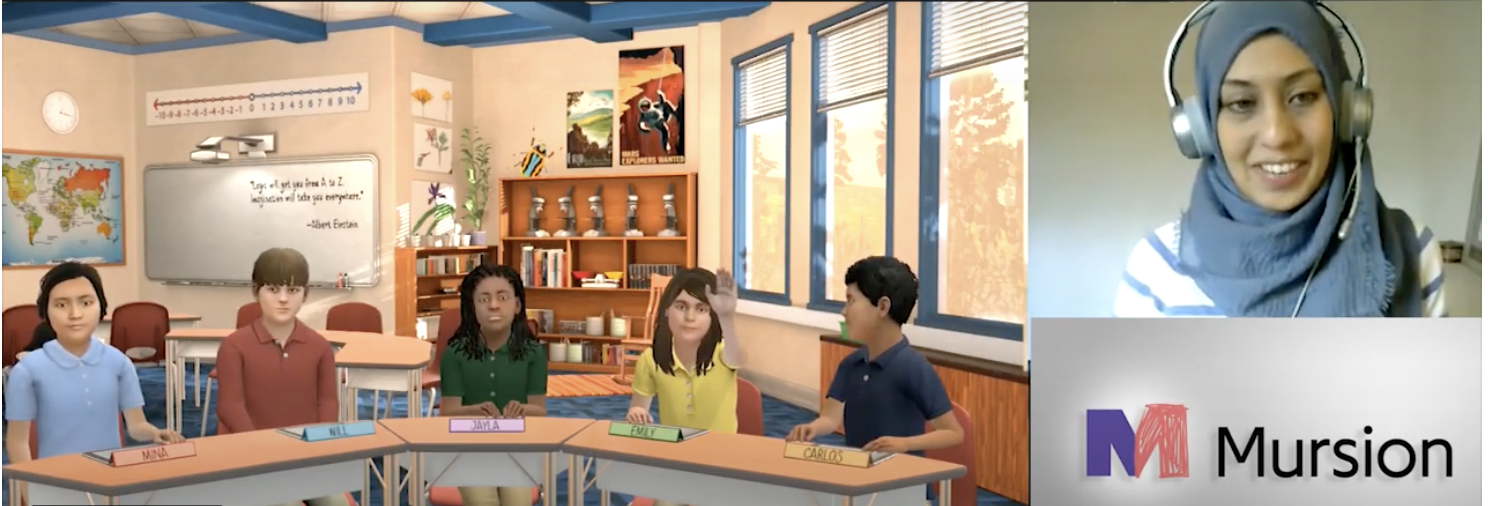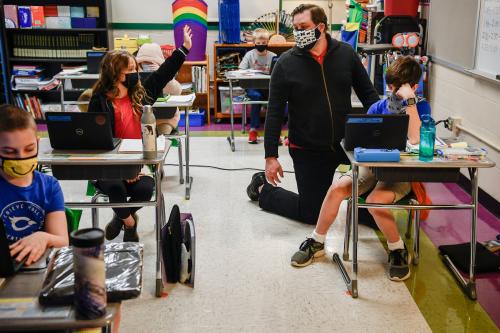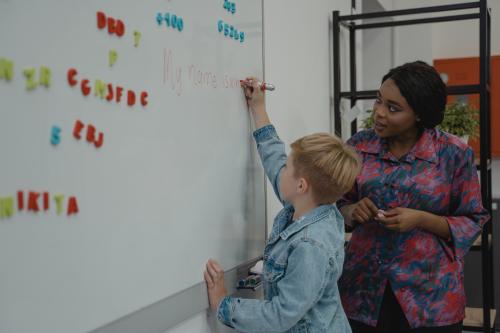Teaching is complex and sophisticated work. Unfortunately, we have limited time—sometimes less than a calendar year—to prepare novice teachers to do this work well. As a result, many new teachers begin their careers with weak instructional skills and are forced to learn “on the job.” The struggle associated with on-the-job training contributes to teacher burnout and attrition, producing negative outcomes for students. Given that nearly 200,000 new teachers enter the workforce each year, we need to ensure that teachers are ready to provide equitable and effective instruction from day one in the classroom.
One of the few clear implications from existing teacher education research is that new teachers need chances to practice key skills; they also need feedback on how to improve. Practice opportunities in teacher preparation typically happen during student-teaching when novices are placed in K-12 classrooms to learn from experienced mentor teachers, meant to model “best practices,” and to provide feedback on how to improve. Though a great mentor can go a long way, not all student-teaching experiences are equally effective. Some mentors teach in ways counter to methods advocated in teacher preparation coursework. Others struggle to provide actionable feedback to novices.
At the University of Virginia, we have spent the last five years supplementing traditional methods for practice with a curriculum of digitally mediated simulations, administered online over Zoom. These simulations focus on a range of critical teaching scenarios—from providing students feedback during a discussion about a literary text to engaging a parent/guardian during a conference about a student. We use a mixed-reality simulation platform developed by Mursion, which features a virtual classroom and student avatars who are remotely controlled by professional actors that we train to facilitate realistic classroom interactions. While digitally mediated simulations are an emerging technology in teacher education, they are well-established in other fields, from medicine to aviation to the military. Medical students, for instance, develop a range of technical (e.g., suturing) and relational (e.g., bedside manner) skills using simulations. Here, we detail some of the lessons we’ve learned about using simulations to both understand and support our teacher-education students’ development. We also describe additional ways that these technological tools could prepare a stronger teacher workforce in the future.
Why Simulations?
In teacher preparation, simulated practice is designed to complement—not to replace—student-placement experiences. However, it also has the potential to powerfully address “experience gaps” that we know exist and improve upon typical pre-service experiences in multiple ways. First, the technology ensures that all novice teachers have chances to practice instructional skills that are essential, but challenging, in classroom settings. For example, most novice teachers would not have opportunities to lead a conversation with a parent or guardian, and yet these conversations are essential for building bridges between schools and students’ caregivers.
Second, the platform provides opportunities for novice teachers to “do over” teaching tasks until they have mastered the technique. Teachers rarely have the chance to make mistakes and try the same classroom situation again, especially elementary school teachers who work with the same group of children all day. And yet, we know that making mistakes is essential for developing professional skills, especially when such missteps are coupled with cycles of individualized coaching and repeated practice.

Third, simulations provide a chance for novice teachers to try new teaching methods without risk of harming live children or their caregivers. Novices will inevitably stumble as they learn new pedagogical approaches. Simulations afford low-stakes spaces for novice teachers to experiment without confusing a child about how to solve a mathematics problem or alienating a parent looking for ways to engage in their child’s schooling experiences.
Fourth, the technology allows novice teachers the chance to practice teaching skills remotely—often from their own living rooms and at times that are convenient to them. This flexibility makes repeated practice readily accessible in ways that in-person practice could never be. Finally, by moving practice into coursework, teacher educators can observe novice teachers while providing extensive and customized feedback that was previously impossible.
Lessons learned from research
Simulations also offer enormous upsides for researchers by providing a standardized platform for delivering new interventions and practice opportunities, and for assessing the development of teaching skills. Currently, we have little causal evidence about the effects of particular experiences in teacher education because it is often challenging to shift the structure and content of coursework—such that some novice teachers are randomly assigned to one learning experience while others are assigned to something different. Moreover, it is often expensive and logistically difficult for researchers to assess novices’ developing skills; student-teaching placements are usually so different from each other that it can be challenging to compare teachers across diverse classroom contexts and settings.
Simulation technology can address both these issues. In the simulation setting, we can experimentally test the effects of different approaches for expediting teacher skill development. And, because simulations can be delivered in similar ways, we can more easily observe and measure differences across groups of novice teachers’ instruction over time.
Over the last five years, we have learned multiple important lessons about how new teachers learn. We see that novice teachers improve with practice, suggesting that there is considerable value in using technology to increase the number of targeted opportunities to attempt new skills in low-stakes environments.
Practice alone, however, does not always make perfect. Our studies also show that offering practice opportunities paired with coaching most consistently improves novice teachers’ instructional skills. We see enormous benefits from coaching, even when teachers have no prior relationship with the coach supporting them over Zoom. In some cases, repeated practice without coaching was related to negative outcomes for novice teachers’ development. In one study, we observed that teachers who only “self-reflected” on their performance between simulations—without receiving coaching and support—were more likely to assess minor, off-task student behavior as severe and meriting exclusionary disciplinary practices, including suspension and expulsion. Overall, our research suggests that new teachers need to receive targeted coaching as they are practicing and mastering new instructional skills.
Future Directions for Research and Practice
Though we often tell teachers that they should provide customized learning experiences and supports based on student needs, we rarely follow that advice in teacher preparation. All beginning teachers follow the same sequence of coursework and clinical practice, regardless of their individual needs. Just as technology can transform learning in K-12 classrooms with intelligent tutoring systems and customized practice and support, so too can these approaches be used to address persistent challenges for providing novice teachers with effective learning opportunities.
We can imagine a version of teacher education in which we use simulations to identify teachers’ relative strengths and weaknesses, and to provide individualized practice and coaching across the preparation period. The more we know about the teachers with whom we are working, the more facile we can be in addressing their specific needs and ensuring they graduate from preparation programs with the skills they need to support students from day one in the classroom.






Commentary
Using classroom simulators to transform teacher preparation
November 17, 2021